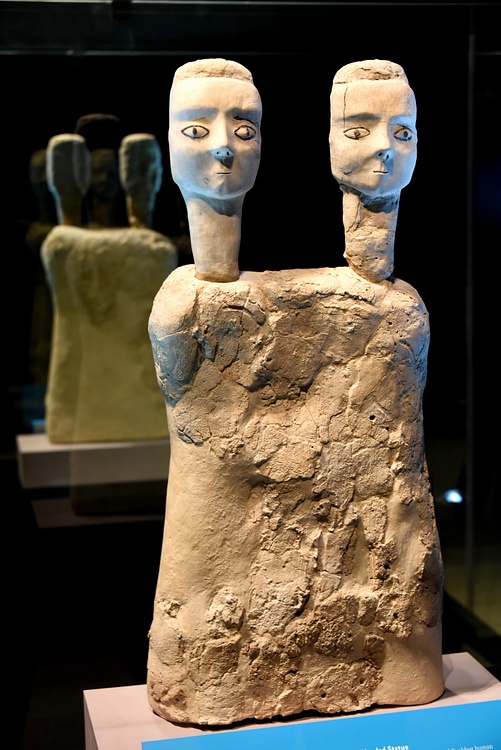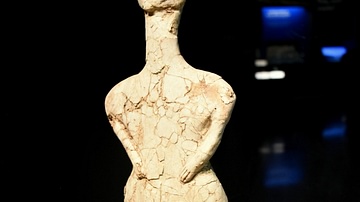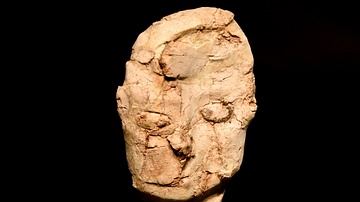Illustration
This two-headed statue (upper torso) was made of lime plaster, reed, and bitumen and was found in modern-day Ain Ghazal city in the outskirt of Amman, Jordan Hashemite Kingdom. Between 1983-1985 CE, 15 statues and 15 busts made of lime plaster and reed were found in two underground caches. These statues and busts (depicting human heads) are considered the earliest large-scale representations of the human being form and are one of the most outstanding examples of prehistoric art from the Pre-Pottery Neolithic B period. All of them are in Jordan and are on display at the Jordan Archaeological Museum and the Jordan Museum; two are on display (as a loan) at the British Museum in London. Pre-pottery Neolithic period B, circa 7500 BCE. ( The Jordan Museum, Amman, Jordan).
About the Author
Cite This Work
APA Style
Amin, O. S. M. (2018, April 05). Two-Headed Statue from Ain Ghazal. World History Encyclopedia. Retrieved from https://www.worldhistory.org/image/8521/two-headed-statue-from-ain-ghazal/
Chicago Style
Amin, Osama Shukir Muhammed. "Two-Headed Statue from Ain Ghazal." World History Encyclopedia. Last modified April 05, 2018. https://www.worldhistory.org/image/8521/two-headed-statue-from-ain-ghazal/.
MLA Style
Amin, Osama Shukir Muhammed. "Two-Headed Statue from Ain Ghazal." World History Encyclopedia. World History Encyclopedia, 05 Apr 2018, https://www.worldhistory.org/image/8521/two-headed-statue-from-ain-ghazal/. Web. 09 Jul 2025.








